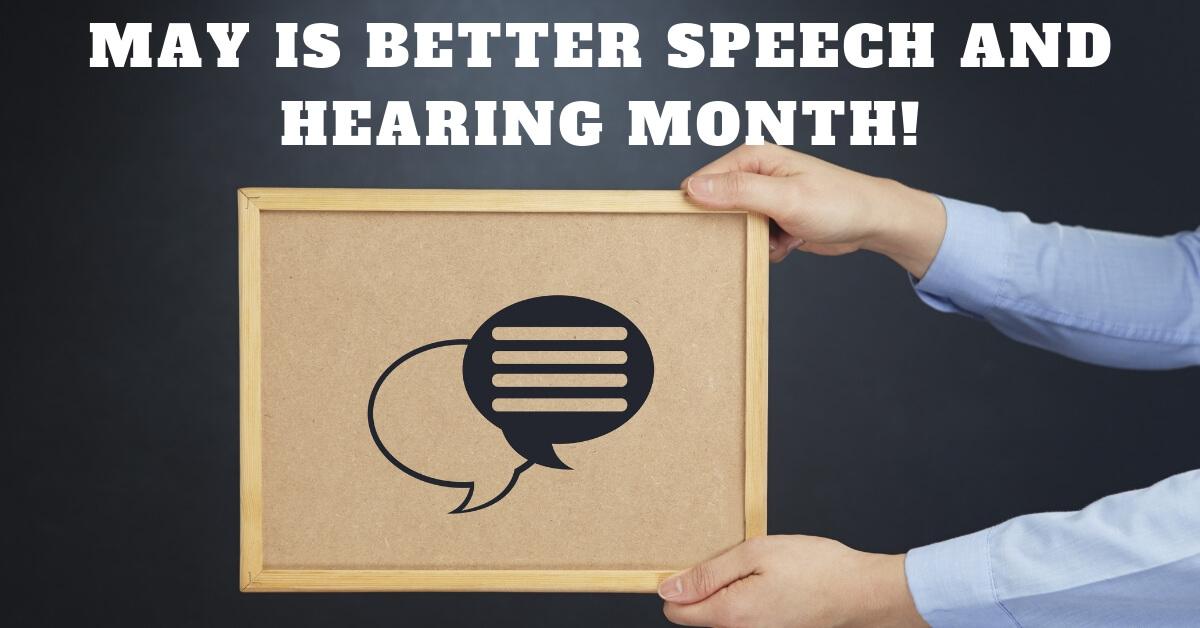- The Benefits of Being Social for Older Americans - February 29, 2020
- Common Excuses for Not Buying Hearing Aids - February 29, 2020
- How Treating Hearing Loss Improves Your Relationships - February 18, 2020
May is the month designated by the American Speech-Language-Hearing Association of America (ASHA) to bring attention and information to one of the nations’ growing health concerns: hearing loss. They are offering the public a variety of resources and avenues of treatment crucial to our hearing health and the importance of its sustainability.
One of the main strategies of Better Speech and Hearing Month is publicizing the growing incidence of hearing loss among the North American population. Another is to provide us with measures we can take for hearing loss prevention and maintenance. The overarching goal is to us keep monitoring our hearing health as we age from infancy through adulthood.
Recognizing hearing loss
How does the average American identify hearing loss? The majority of us take our hearing for granted like breathing, but as we age and live in increasingly urban environments, we must take heed.
Hearing loss van be a slow process without significant symptoms at first. Gradually, we become accustomed to blocking out unwanted noise by increasing the volume on our listening devices or turning up our TV’s. By the time we get to the point when we are increasingly asking people to repeat what they are saying or having a hard time listening accurately in a phone conversation, we might already be at a crucial juncture of our hearing abilities. We continue to compensate and our hearing continues to deteriorate. The first course of action is recognizing the aforementioned symptoms.
Our work environment
According to statistics by the US Department of Labor, over twenty million workers are subject to damaging levels of sound at their job site. The cost of hearing loss and its’ effect on workers is hard to accurately quantify but has been estimated in the hundreds of millions of dollars annually.
The Occupational Safety and Health Administration mandates strict codes for our work environments for the preservation of the workers’ hearing health. Tests for the noise levels in the workplace have been set for our protection, as is equipment and hearing loss prevention devices. There are systems in place for our protection but it is up to the individual to be their own protect themselves and to be vigilant. Prevention as always is the best course of action. It benefits us economically, socially and professionally.
Our social lives
When we experience the slow decline of our hearing, we will naturally make adjustments in our daily lives. We lean in closer to hear people speak or ask them to repeat themselves. We do not notice that incessant beeping of our neighbors’ car horn because we think we have tuned it out. The strain from continually filtering out noise pollution and compensating for our hearing impairment invariably takes its toll.
The final debilitating effects result in lowering our cognitive abilities, withdrawal from social situations and fatigue. This, in turn, can result in isolation.
Our cognitive abilities begin to decline as our brain filters out environments where we have to exert ourselves to hear as well as we used to. This begins a downward spiral of our emotional and physical health.
Prevention
Be vigilant at all times. If you find yourself in an extremely loud environment it is best to remove yourself from it. The wail of sirens or the sounds of the jackhammer is part of the noise pollution that some battle on a daily basis in an urban environment and hard to avoid at times. Cover your ears and carry earplugs with you at all times.
According to a study by The Journal of the Acoustical Society of America, using some select smartphone sound apps are an effective tool to measure sound levels with their built-in microphones. This is a strategy that is worthy of investment to safeguard ourselves in our work and living spaces.
If you use over the ear headphones the 60/60 rule is one to follow. Keep it at sixty minutes of listening time at sixty percent volume per day. At the end of your day, give your ears a rest!
Treatment and Technology
The growing field of hearing loss treatment begins with you getting your hearing assessed and evaluated. Treatment can only begin after your hearing has been tested by a hearing health professional. There is no one path to curtailing hearing loss but many to choose from. Treatments can include anything from surgical implants to hearing aids. Technological advancements help to compensate with assistive devices, telephones with captioning, alerting devices and sound systems in public places for the hearing impaired.
How will you benefit from investing in your hearing?
We think of our overall health in terms of diet and exercise but not enough of us pay attention to the sense that allows us to communicate! Every stage of our lives requires us to modify our health regimens so we can benefit physically and emotionally and our hearing should be a priority. Unlike other health conditions, hearing impairment is invisible and therefore requires us to be more vigilant.
All Ear Doctors
Do you have any questions or concerns regarding your hearing? Does a close family member or friend exhibit symptoms of hearing loss? Make your first appointment with us and the first step towards healthy hearing!

